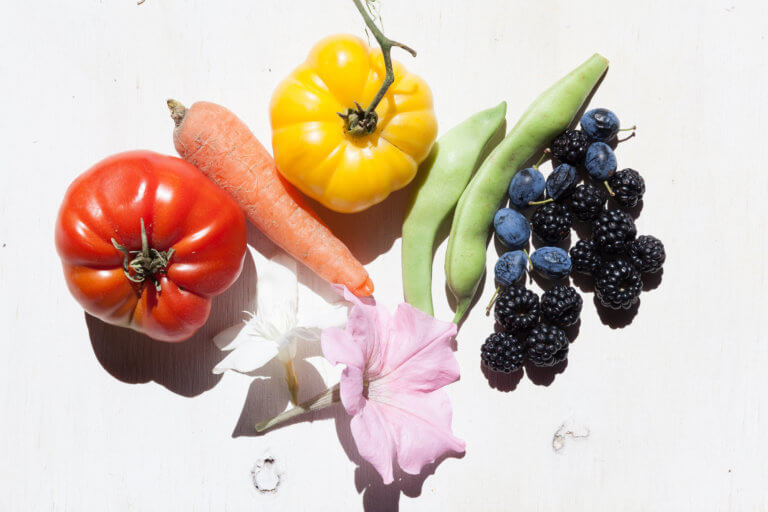
28 Apr What Does “Eat the Rainbow” Mean?
Let’s talk about a way we can focus on eating healthy and delicious foods—eating the rainbow. We have all heard the saying, “An apple a day keeps the doctor away.” Though that’s not quite true, a bit of wisdom you can take from it is that eating colorful fruits and vegetables is healthy. Why? Well, it’s because of the phytonutrients—the amazing and super powerful micronutrients that give our fruits and vegetables their color. Scientists continue to identify unique phytonutrients and have already identified 5,000 phytonutrients to date. Also, we are continuing to learn about all of their benefits. The American Heart Association has even created an amazing Add Color campaign to promote the healthy habit of eating lots of color.
Today, I want to provide you with a list of great and tasty ways to add color to your everyday nutrition.
Our first color to focus on is green. Here are some great sources of greens:
- Spinach
- Asparagus
- Avocados
- Broccoli
- Peas
- Green apples
- Green grapes
- Limes
- Kiwifruit
- Green beans
- Lettuce
- Cabbage
- Celery
- Cucumber
- Green peppers
You can add these ingredients in a recipe, tossed in a salad, and so much more.
To boost your greens, try this delicious Go Green shake recipe.
Here are some great sources of reds:
- Tomato
- Red peppers
- Radishes
- Strawberries
- Rhubarb
- Cherries
- Red grapes
- Raspberries
- Watermelon
- Red apples
I love using my reds for snacks throughout my day, such as snacking tomatoes. Or if I am feeling like something sweet, sliced strawberries and raspberries with a splash of milk on top. Check out this list of 10 quick and easy shake recipes to try out today.
Some sources of white phytonutrients:
- Cauliflower
- Brown pears
- Mushrooms
- White peaches
- Garlic
- Bananas
- Potatoes
- Dates
- Onions
- Ginger
- Parsnips
- Turnip
Most of my whites I will blend into smoothies, like cauliflower or banana, but my favorite on this list is ginger. At night, I like to take my favorite tea and add a few thin slices of raw ginger, yum! But if you want a full meal, I recommend trying a cauliflower pizza crust like in this recipe.
Some sources of purple/blue phytonutrients:
- Beetroot
- Red cabbage
- Eggplant
- Purple asparagus
- Blackberries
- Blueberries
- Purple grapes
- Plums
Has anyone tried spiralized beetroot noodles? So delicious and if you haven’t you should. Another great way to boost your purples is substituting eggplant where a recipe calls for meat. For something refreshing, you can also try this delicious Pom-berry lemonade.
Some sources of yellow/orange phytonutrients:
- Carrots
- Cantaloupe
- Lemons
- Sweet potato
- Pumpkin
- Pineapples
- Mangoes
- Corn
- Oranges
- Squash
- Peaches
- Nectarines
- Apricots
- Grapefruit
There are far too many exciting and delicious ways to use all of these fruits and vegetables, so I will just name a few. Add steamed carrots into baked goods to add sweetness. Add grilled pineapple to homemade salsa. Add lemon in my sparkling water—I could go on and on! To get you started with some salad ideas as well, here are a few delicious ones.
There are so many phytonutrient benefits to eating the rainbow as well as the benefits of increased fiber and a diet filled with a variety of vitamins and minerals. Join me, and let’s enjoy all the various colors and benefits of the rainbow every day.
In health, Sarah Elijah Scherer, RD, LN, MBA, OLY


The post What Does “Eat the Rainbow” Mean? appeared first on Shaklee Corporation.
